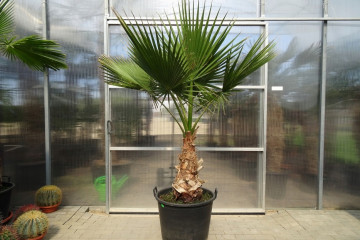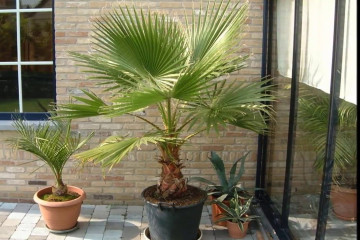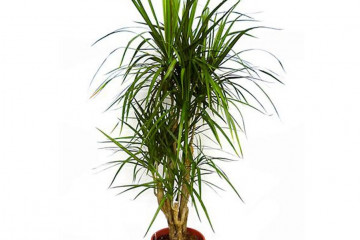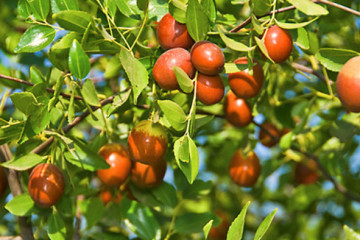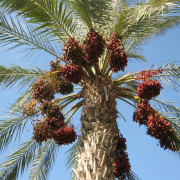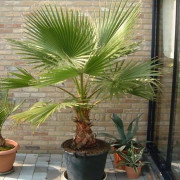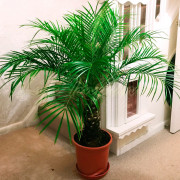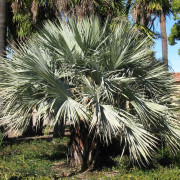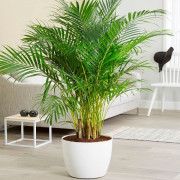Liviston palm - how to plant and care at home
Content:
Liviston palm is a beautiful, unusual, and at the same time unpretentious plant. But they also appreciate it for the fact that the palm tree cleans the air well in the room and grows quickly. Caring for her is within the power of both experienced flower growers and beginners.
Liviston palm - what is this flower
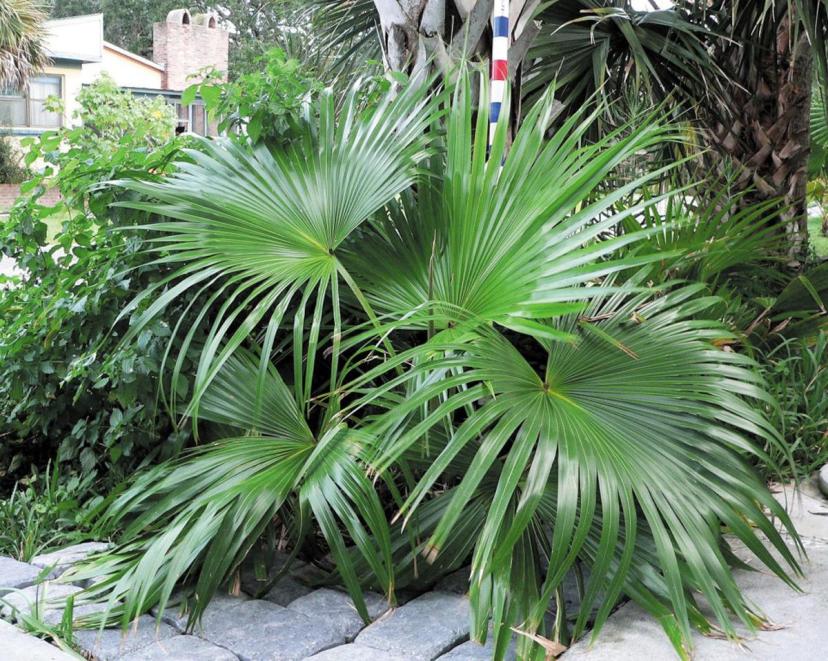
The green exotic beauty fits well into the ensemble of the garden plot
Before starting such a plant at home, it is advisable to learn more about the varieties of culture and the features of its cultivation.
A short description of what it looks like
In the wild, the Liviston palm reaches impressive dimensions - up to 20-25 m in height. But you should not be afraid - when growing at home, the plant is more compact - it grows up to one and a half, maximum two meters.
The leaves of the palm are very beautiful - likely, spreading. Yes, and the size is impressive - the plant can be up to a meter in diameter! The color of the leaves varies significantly - from grayish green to dark green. Moreover, it depends both on the type of palm tree and on the conditions of detention - starting with humidity and illumination, ending with the composition of the soil.
Liviston palm species
To date, 36 species of the Liviston palm are known. In indoor conditions, several types of crops are most often grown.
Chinese Livistona (Livistona chinensis)
Not the tallest representative of the family - the trunk can grow up to 10-12 meters with a diameter of 40-50 cm. The leaves are fan-shaped, usually up to 50-60 cm. The petioles can be up to 10 cm thick and up to one and a half meters long. In the middle, the edges are seated with short, pointed spines.
Livistona rotundifolia
The plant is native to the Moluccas and Java, where it grows mainly on sandy soil. The round-leaved Liviston reaches a height of 14 meters, but at the same time it is very thin - rarely more than 20 cm in diameter. But the leaves are very large - they often grow up to one and a half meters. Red axillary inflorescences also often exceed a meter, which adds attractiveness to the palm.
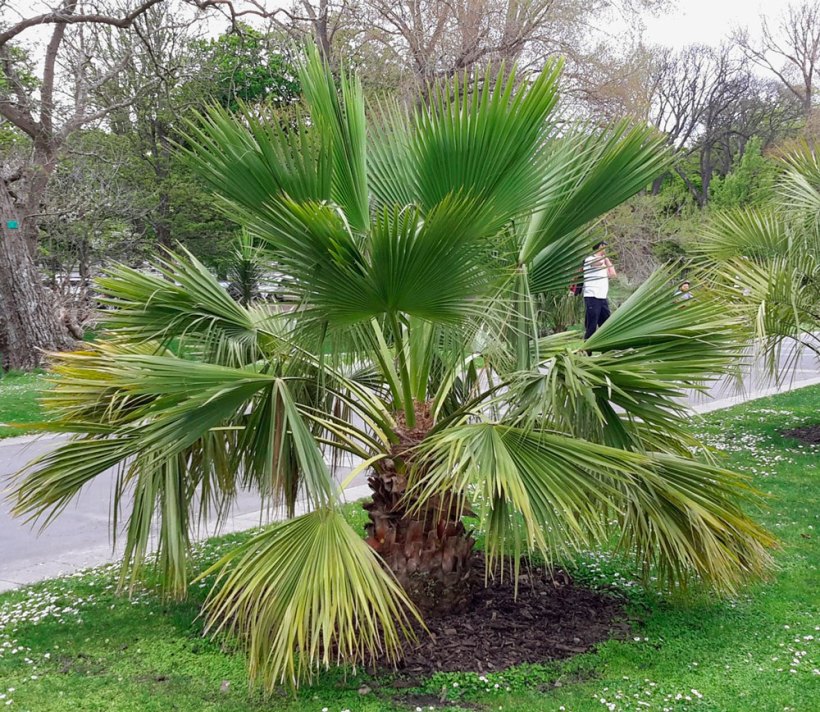
Palm tree in the park
An important advantage of this type is that it easily tolerates low temperatures.
Livistona australis
One of the tallest plants of its kind - up to 25 meters. It grows mainly in Australia. It boasts gorgeous leaves - their diameter often reaches two meters. The long petioles are studded with brown, hard and sharp spines. But, despite this, the plant is highly valued by lovers of exoticism - it is grown both in greenhouses and in residential premises.
Livistona decipiens
This type of palm grows more slowly than most of its relatives.Yes, and it cannot be called especially large - even in the wild, specimens higher than 10 meters are rarely found.
Livistona mariae
Representatives of this species are rightfully considered the tallest among palm trees - specimens up to 30 meters are often found. The trunk of the plant is thick near the base, gray in color. Fan leaves grow on two-meter petioles, also two-meter long.
Liviston round-leaved palm - home care
In order for the culture to actively grow and develop, it is important to follow some rules of care.
Illumination and temperature conditions
On summer days, an indoor palm tree prefers a high temperature - from +24 to +30 degrees. Peace is needed in winter, and the optimum temperature is + 10 ... +14 degrees. It is undesirable to go below this mark - the plant may get sick.

Palm plantation
Lighting should be as intense as possible - the palm tree feels great in direct sunlight. If possible, in the summer, the tub should be taken out into the garden.
Watering rules and humidity
You need to water the palm tree little by little, but regularly. You need to follow the soil - if it starts to dry, then it's time to water. You also need to monitor the health of the plant. Noticing that the leaves wilt, and spots appear on their surface, you should increase the intensity of watering. In winter, watering is reduced to a minimum - a healthy plant will withstand it without problems.
If the humidity in the room is low, you can spray the culture with water at room temperature. It is advisable to do this twice a day using a simple spray bottle. Thanks to this, the leaves will definitely not dry out even in the hottest months.
Top dressing and soil quality
When choosing a suitable soil, it is better to give preference to neutral or slightly acidic soil. An excellent choice would be a mixture of sand, peat, humus and turf, taken in equal proportions. If possible, you can purchase a ready-made mixture used for growing palm trees.
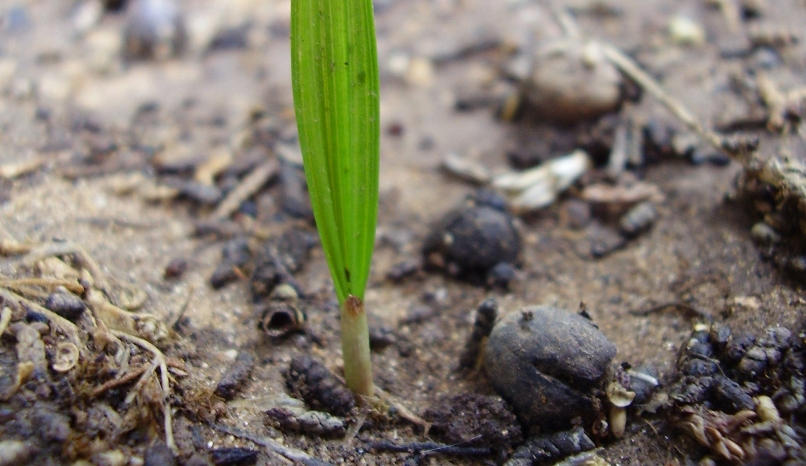
The first sprout of a palm tree
It is advisable to use special fertilizers for palm trees as fertilizers. They are dissolved in the water that is watered on the plant. You need to feed the palm tree every 3-4 weeks, but only from mid-spring to late summer, when it grows most actively. In the cold season, fertilizers do not need to be used.
Flower container size
For a small palm, a small pot is suitable - 2-3 liters. It is important to ensure good drainage - there must be holes in the bottom of the container to drain moisture. Also, before filling the soil into the pot, you should lay expanded clay, pebbles or crushed stone with a layer of 3-5 cm.
Liviston palm transplant
The first years of life, the palm grows very quickly. The root system is developing actively, so after three to four years it will take up almost the entire volume of the pot. then it will be possible to transplant.
The procedure itself is simple. The step-by-step instructions are as follows:
- Water the potted soil abundantly.
- While it is soaking, prepare a new pot - 2-3 liters more than the old one - put drainage on the bottom and pour some soil.
- Carefully, trying not to shake the soil from the roots, remove the plant from the old pot and lower it into a new one.
- Pour the earth on top and near the walls, tamp lightly and water a little.
Propagation of palm trees from seeds
Seeds are dropped 1 cm into warm, moist soil in a pot (if one plant is needed) or a box (if several are needed). From above, the pot is closed with polyethylene or glass and left in a dark, warm room for 1-1.5 months. When the first shoots appear, the glass is removed and the earth is moistened.
It is important to protect the plant from direct sunlight. After another month, the seedlings can be planted in different pots.
Possible growing problems
Growing a palm tree, you can face a variety of difficulties - from diseases to pests. Therefore, you need to know how to protect the plant from both threats.
Diseases and pests
One of the most common diseases is leaf spot. It occurs when the humidity in the room is low. To solve the problem and prevent it, you need to spray the leaves from a spray bottle twice a day.
More problems are caused by late blight, Fusarium, Pitium and other fungal diseases. To save the plant, you need to treat it with a copper-containing fungicide as soon as possible.
Of the pests on Liviston, whiteflies, spider mites and scale insects are found. To cope with them, the leaves need to be cleaned of parasites - the easiest way to do this is by carefully wiping them with a cotton swab dipped in alcohol. Then the plant is treated with insecticide against scale insects and whiteflies or acaricidal preparations against ticks.

Chic home decoration
Growing a Liviston palm is much easier than it might seem. And with proper care, it will decorate any apartment, house or office with luxurious leaves for many years.
